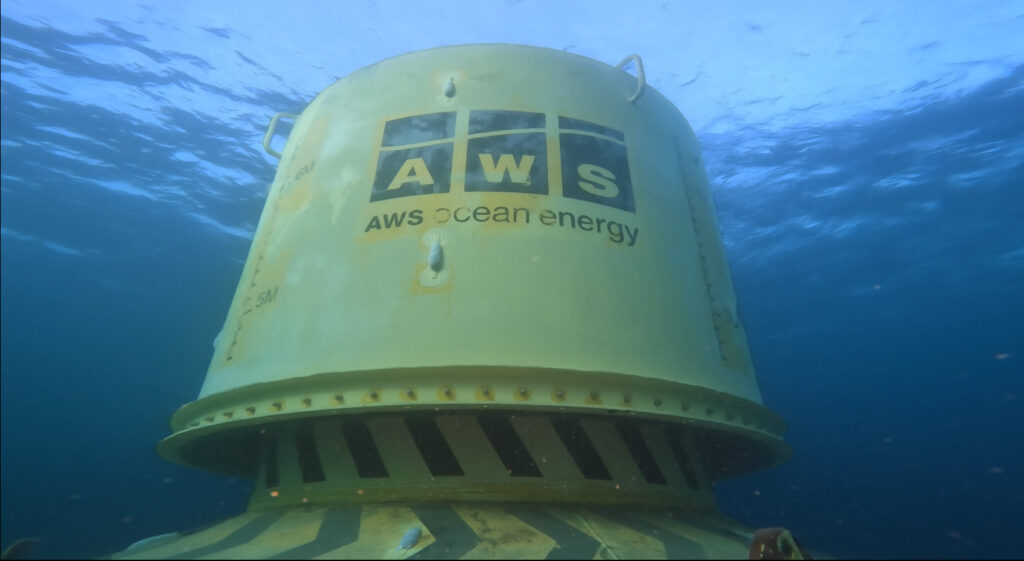Nova Scotia has allocated circa 30MW of capacity via demonstration permits and berths at FORCE (Fundy Ocean Research Center for Energy) for developers to demonstrate the effectiveness, cost and environmental effects associated with this new form of energy generation. These demonstration projects provide developers with a pathway to reduce costs on route to commercial projects with regulatory framework already in place to deliver up to 300MW of installed capacity. It further aligns with the region’s net-zero commitments to accelerate the phase-out of coal-fired electricity by 2030.

Other key findings underline the survivability potential of the subsea Waveswing which continued to deliver power in poor weather conditions. AWS demonstrates this in the following simple but highly effective video clip, shot during Force 10 gales, showing a steel nut suspended on a string inside the device.
Nova Scotia’s potential for tidal power is massive.
The Bay of Fundy’s tides push over 160 billion tonnes of water twice a day. That’s more than four times the combined flow of every freshwater river in the world!
That’s also an estimated potential of up to 60,000 megawatts (MW) of energy, of which up to 2,500 MW may be extracted without significant impact on our marine environment. However, the Province is aiming for a more modest 15 to 20 MW on the path to reducing cost before the goal of 300 MW of energy can be reached.”
Nova Scotia is a leader in the global tidal energy industry. The province is home to a world class ocean technology sector and a network of active, high-profile marine researchers. Tidal energy is a clean, predictable, and renewable energy source. FORCE (Fundy Ocean Research Center for Energy) is Canada’s leading test centre for in-stream tidal energy technology. FORCE collaborates with industry, government, and researchers to study the interaction between tidal turbines and the Bay of Fundy environment. FORCE provides a shared observation facility, submarine cables, grid connection, and environmental monitoring at its test site. The site is ideal for testing, with water depths of 30 to 45 metres at low tide, a bedrock sea floor, straight flowing currents, and peak surface speeds of up to 6 metres per second. FORCE also conducts innovative research, including the deployment of the Fundy Applied Sensor Technology Platform (FAST) and Vectron Project, designed to improve environmental monitoring at the site.
Learn more about meeting the tidal energy in Nova Scotia.

